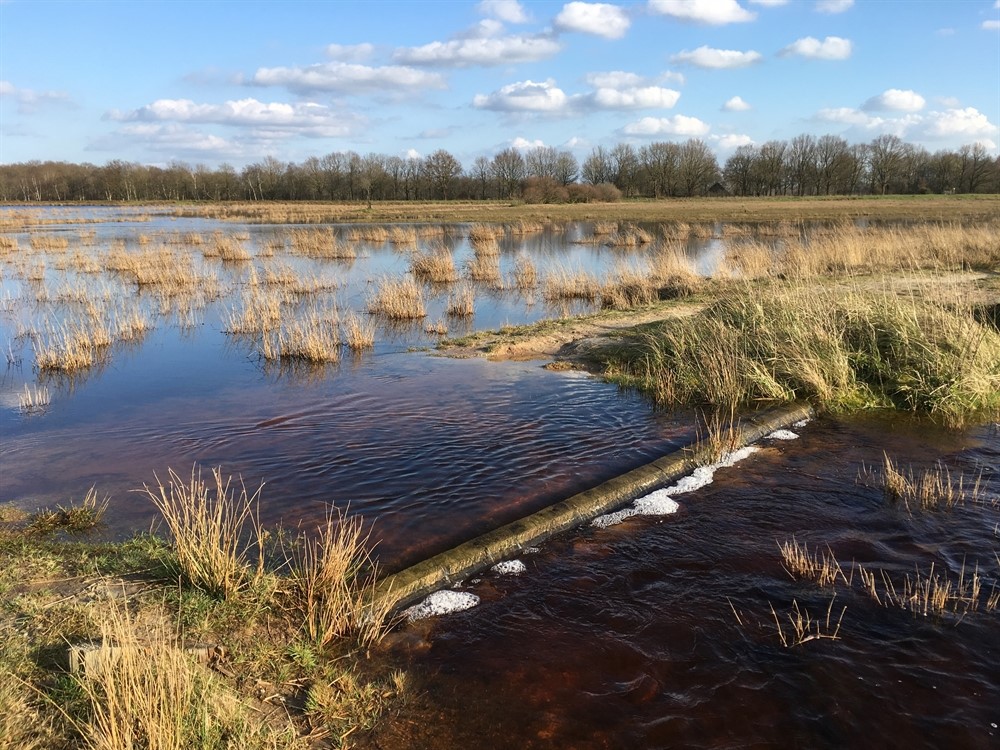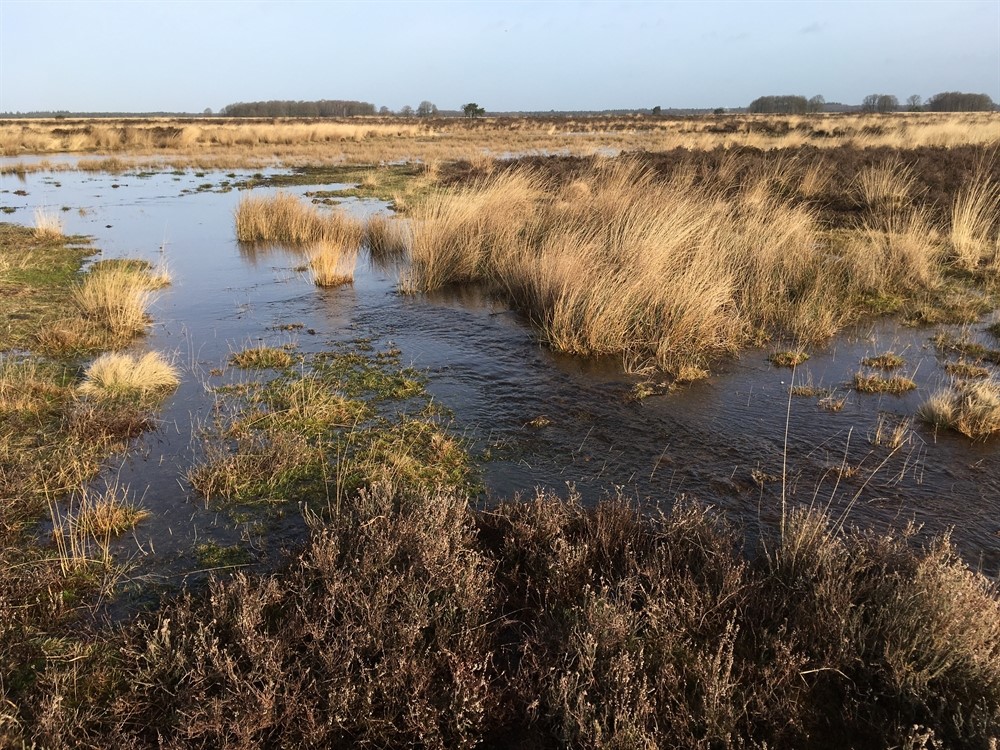Dwingelderveld natural climate buffer
In the southwestern part of the province of Drenthe, between the Oude Vaart and Ruiner Aa brook valleys, lies Dwingelderveld National Park. Between 2008 and 2015, major efforts were expended here to enhance the natural environment in this park and to collect rainwater during extreme downpours. To this end, the area needed to be water saturated. Dwingelderveld is now the largest wet heathland in northwest Europe. The paragraphs below explain why the area has been water saturated and what measures have been taken to achieve that goal.

Why has the area been water saturated?
Water saturating the Dwingelderveld park fosters the restoration of the natural environment in the area. Originally, the park encompassed 175 hectares of farmland, right in its centre. The Natuurmonumenten foundation, the Drents Overijsselse Delta district water board, Staatsbosbeheer [Dutch government organisation for forestry and management of nature reserves] and other parties have excavated the farmland and converted it into nature. Dwingelderveld Natural Park now provides temporary storage for more than a million cubic metres of rainwater. This combats dehydration and reduces waterlogging in the surrounding, lower-lying areas. Furthermore, it has enhanced the habitat for flora and fauna.
What measures have been taken?
The collaborating parties have taken a wide range of measures to create more wet heathland in the Dwingelderveld park. In addition to water saturating the area, their goal was to make the area quieter, expand its surface area, and enhance its biodiversity. The full list of measures is provided in the summary of the results. These are some examples:
- In large parts of the former Noordenveld and Kloosterveld farmland, the top layer of soil has been removed. This was essential, because this soil contained a great deal of fertilizers – such as phosphates – that preclude the growth of heath. When phosphate-rich soil gets wet, it releases large volumes of phosphates, resulting in the growth of harmful algae and soft rush;
- The Dwingelderveld area is capable of storing huge volumes of rainwater. Weirs stem the water during extreme precipitation. Furthermore, embankments have been constructed to protect the surrounding area against waterlogging;
- In the purview of water saturating the area, natural water retention channels have been restored. In addition, all the excavated drains, ditches, and drainage canals have been sealed off. This prevents run-off;
- In the Kloosterveld area, a water storage facility has been created, which ensures that excess water will only flow off very gradually.
View an impression of Dwingelderveld National Park or a series of RTV-Drenthe reports on Dwingelerveld from 2016.
What are the results?
Over recent years, the measures implemented in Dwingelderveld National Park have produced the following results:
- The area works as a sponge: it can absorb large volumes of water and retain water for a long time. Consequently, Dwingelderveld protects lower-lying areas against waterlogging and reduces dehydration;
- The measures have rendered the nature reserve larger, wetter, and quieter;
- Biodiversity in the Dwingelderveld area has increased. Every year, several pairs of common cranes are now breeding here;
- The area has become more appealing to visitors. The construction of new bicycle paths and a new family path has added to its appeal. The family path is wheelchair accessible.

Who have participated in this project?
The following parties have contributed to this project: Natuurmonumenten nature organisation; Drents Overijsselse Delta district water board; Staatsbosbeheer government forestry organisation; the province of Drenthe; Rijkswaterstaat [the executive branch of the Ministry of Infrastructure and Water Management]; Dwingelderveld National Park; and the municipalities of Westerveld, De Wolden, and Midden-Drenthe.
The project has been co-funded from a LIFE Nature grant.
Contact
Bezoekerscentrum Dwingelderveld
www.natuurmonumenten.nl
0522-472951
